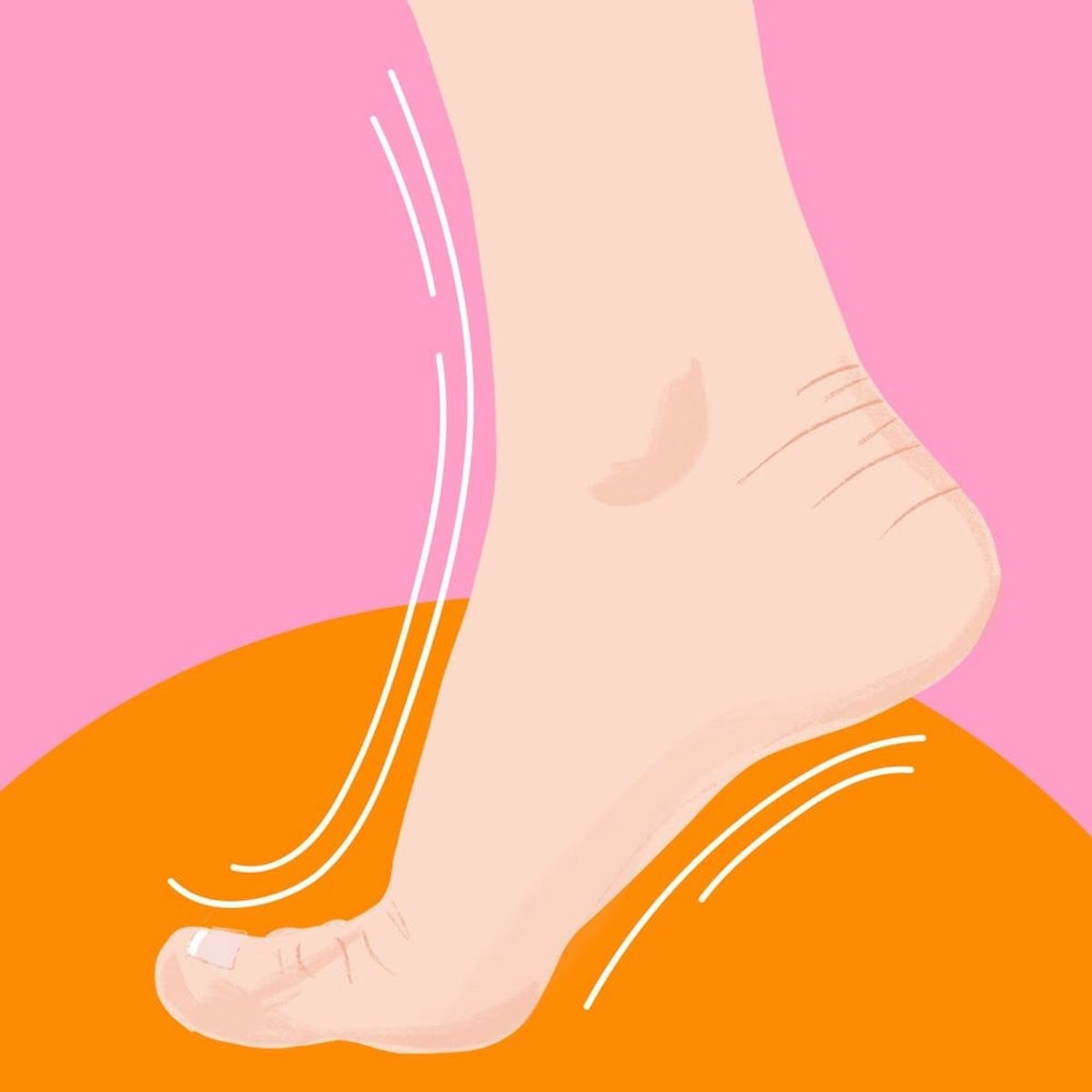Here’s the real reason your feet are peeling.
Why Do My Feet Keep Peeling?

As much as we love swapping tips and tricks to solve our biggest beauty dilemmas, there are some questions we may not feel comfortable asking our friends about, let alone Google without going incognito. Don’t worry. We’ve got you covered. In this series, we’re tackling those embarrassing beauty queries by turning to experts in the field to get you the answers you need — minus any awkward feelings.

As we round out summer, you may be realizing that your feet look particularly battered — and we’re not just talking a chipped toenail or two. If you’ve reached down to slip into a pair of your favorite sandals only to think, “Mmm, better not,” you’re not alone. Peeling feet are incredibly common, even if no one admits to it. Keep scrolling to discover what’s up with your feet and if it’s something you should *actually* be concerned about.
HERE’S WHY YOUR FEET ARE PEELING

Brit + Co: My feet keep peeling. What’s up with that?
Papri Sarkar, Boston-based dermatologist and vice president of the New England Dermatological Society: There are many, many reasons that the skin on the feet might peel. Sunburns, genetic disorders, infections, psoriasis, eczema, and rarely, certain types of skin cancer. The two most common reasons that I see for peeling feet are 1) excess dry skin, and 2) tinea pedis AKA athlete’s foot.
B+C: Okay, so it looks like peeling is really common. Can you break down what might make it worse?
PS: Peeling can be the result of internal or external factors. For example, if you have athlete’s foot it really means that you have a superficial fungal infection by an external organism called a dermatophyte. An internal cause of peeling skin on the foot can be a genetic disorder that causes dry, cracked, thickened skin of the hands and feet, along with a host of other findings. Dry, excess skin, like we usually see in clinic, can be a a mix of internal and external factors. For example, if you have dry skin that runs in your family, you have an internal factor that contributes to [any other external causes you might be facing]. In addition, external factors like weather (especially winter or forced hot air), using drying or harsh soaps, or very hot water can dry out the skin as well.
B+C: Speaking of weather, is there a certain time of year when peeling is more likely? Or is it a year-round kind of thing?
PS: In summer, when it’s hot and more people are sweaty, all fungal infections, including tinea pedis/athlete’s foot, increase. In winter, when dry skin is rampant all over the body, dry skin on the feet makes more appearances too.
Signs OF and solutions FOR peeling

B+C: Interesting. Are there ever any symptoms to look for to stop an incipient case of athlete’s foot or prevent a bad case from getting worse?
PS: Yes. If you notice itchy, white skin between the toes and you know it’s the beginning of your usual athlete’s foot, I recommend a few things:
1. An Anti-Fungal Cream: Ideally you want to use it between the toes, on the top of the foot, and the whole bottom of the foot twice a day for two to four weeks. It may seem like overkill to treat everything below the ankle, but this is most effective. Don’t just put it in the areas you see the fungus. It’s hiding elsewhere too.
2. Clean, Dry Feet: If your socks get sweaty, change them often. Fungi like moist, warm environments, and the close quarters between toes is a favorite place for them to make a home. Make it inhospitable for them!
B+C: If it’s not athlete’s foot, what steps do you recommend?
Quenby Erickson, Chicago-based dermatologist and founder of Erickson Cosmetic Dermatology, Laser and MedSpa: In general, regular use of a cream containing urea [like Gold Bond Triple-Action Foot Cream ($6)] or lactic acid will keep the skin moist and supple, preventing peeling.
PS: Some people have excess sweating (called hyperhidrosis) of the feet. For those folks, using something like Certain Dri ($7) (a liquid antiperspirant) can help to decrease sweat and make the area less hospitable for fungi. Extra hot showers, harsh soaps, and dry, hot air will only dry out skin — especially if it’s already dry. And dryness can lead to peeling. As soon as you’re out of the shower, when your feet are still a little damp, put on a thick, moisturizing cream. This can be slippery, so I usually recommend slippers or flip-flops. For dry skin, I also love foot peel kits like the Patchology PediCure ($20) or Baby Foot ($25). Just be warned that when you get peeling from these it REALLY peels, so give yourself a seven- to 10-day head start before you plan to wear flip-flops or get married on a beach! A simple scrub or pumice stone can also do the trick if your dry skin isn’t very severe.
And if it just won’t let up…

B+C: If all that doesn’t work, what’s the next step?
QE: There are many causes of peeling that only a dermatologist would know how to diagnose and treat. If home remedies are not working, consult a board-certified dermatologist. If it persists, it may point to a more serious condition with systemic implications, such as psoriasis or hypothyroidism.
Have any more awkward beauty questions? Let us know @BritandCo!
Brit + Co may at times use affiliate links to promote products sold by others, but always offers genuine editorial recommendations.
Illustrations by Yising Chou
(Photos via Staras/Getty; Jackie Jan/Getty; Robert Przybysz/Getty)



















